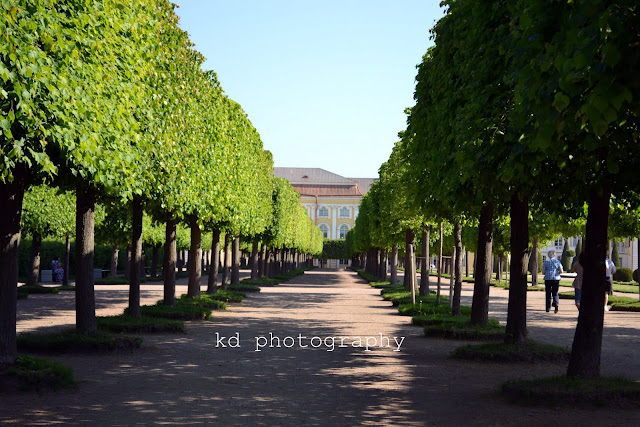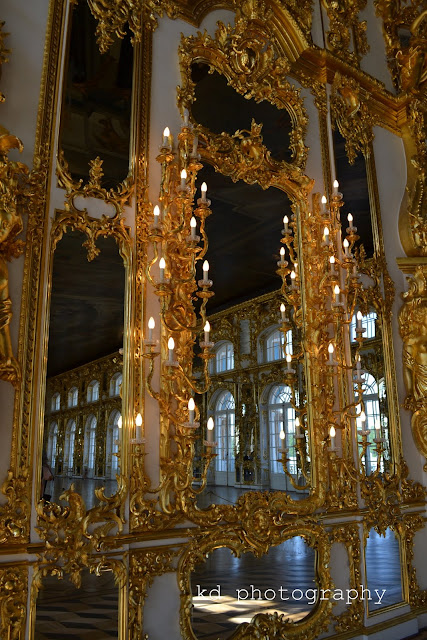On our second day in St. Petersburg, we toured Peterhof, one of most famous ensembles, sometimes dubbed "the capital of fountains," a magical sight of water and gold, marble and bronze, magnificent paterres and age-old trees. (
Source: Peterhof Guide Book) I was straining already from all the walking we did at Catherine's Palace, the Hermitage and a night show of Russian folk dances the day before, but once I saw how beautiful and inviting Peterhof was, I forgot how tired I felt and just snapped photos the entirety of our visit.
Although we didn't tour the interior of Peterhof, I think that the gardens and fountains are much more beautiful especially that the blue skies and warm weather framed the impressive palace and its enticing gardens and fountains.
The Cathedral of St. Apostles Peter and Paul. This cathedral is walking distance from the Peterhof Palace.
I love the well-trimmed gardens at the palace entrance.
Playful nymphs and fountains at the entrance pool.
For me, the Great Cascade is the highlight of this palace. From here, you can see the waters flow to join the Gulf of Finland. On the left, you can see the Trumpeting Tritons.
Gold statues shine underneath the Russian sun.
Peter I headed the construction of this palace and he launched the fountains to celebrate the end of the Northern War (1721). (Source: Peterhof Guide Book)
According to our tour guide, the Great Cascade is one of the biggest fountain ensembles in the world. It includes more than 60 fountains, more than 250 statues and reliefs. (Source: Peterhof Guide Book)
The Samson Fountain was placed in 1735 to commemorate the 25th anniversary of the Battle of Potava (1709). The water jet of the fountain, located at the mouth of the lion, is the highest in Peterhof, about 21 meters. Peter I wanted Heracles fighting a Hydra, but they decided on Samson Defeating the Lion instead. Why? Because the triumph of the Potava Battle took place on the memory day of Sampson the Hospitable, the namesake of the famous biblical hero. (Source: Peterhof Guide Book)
















































